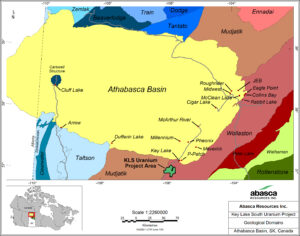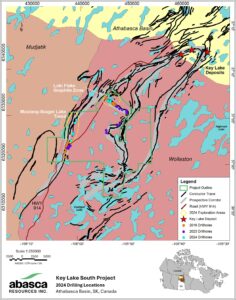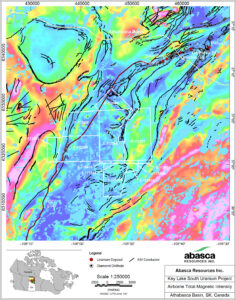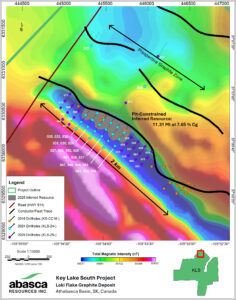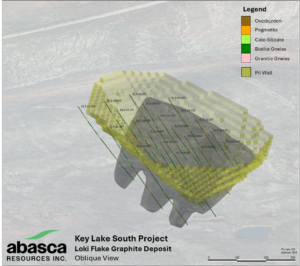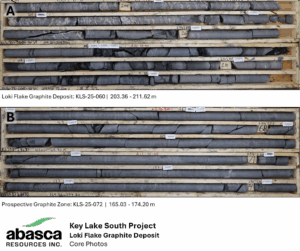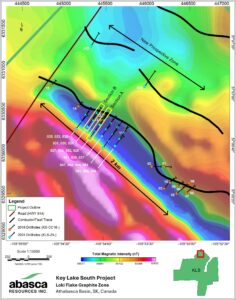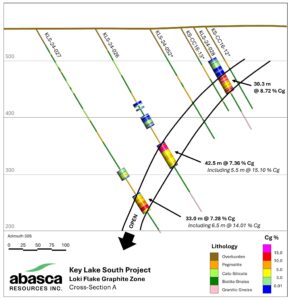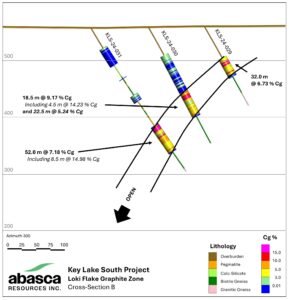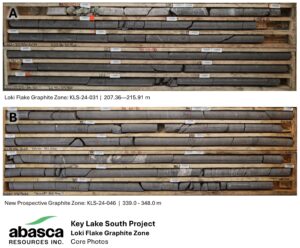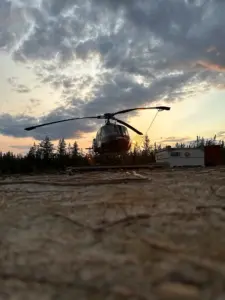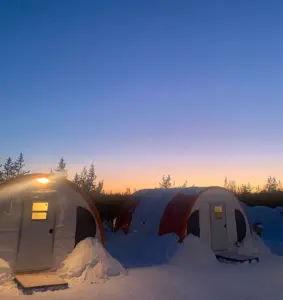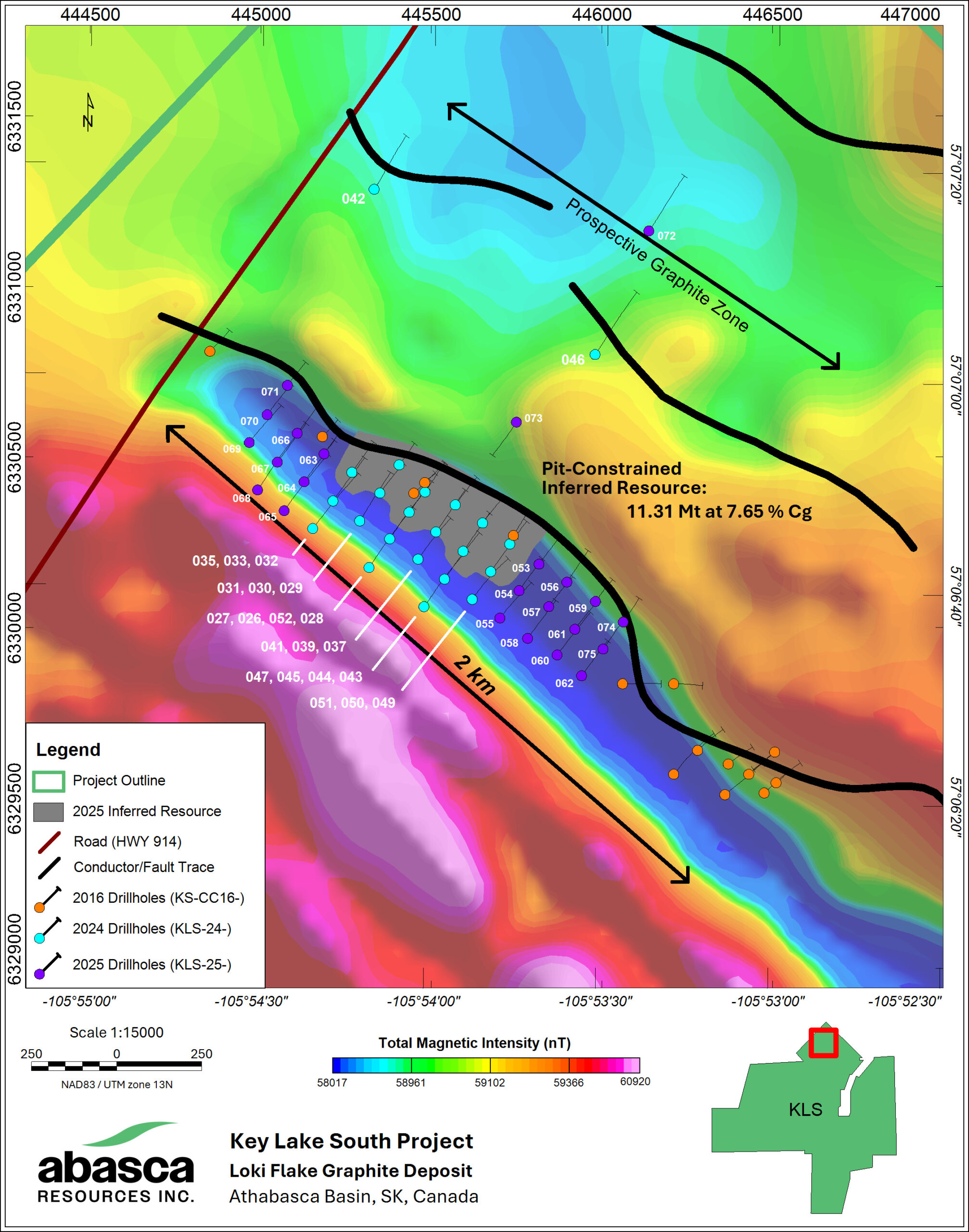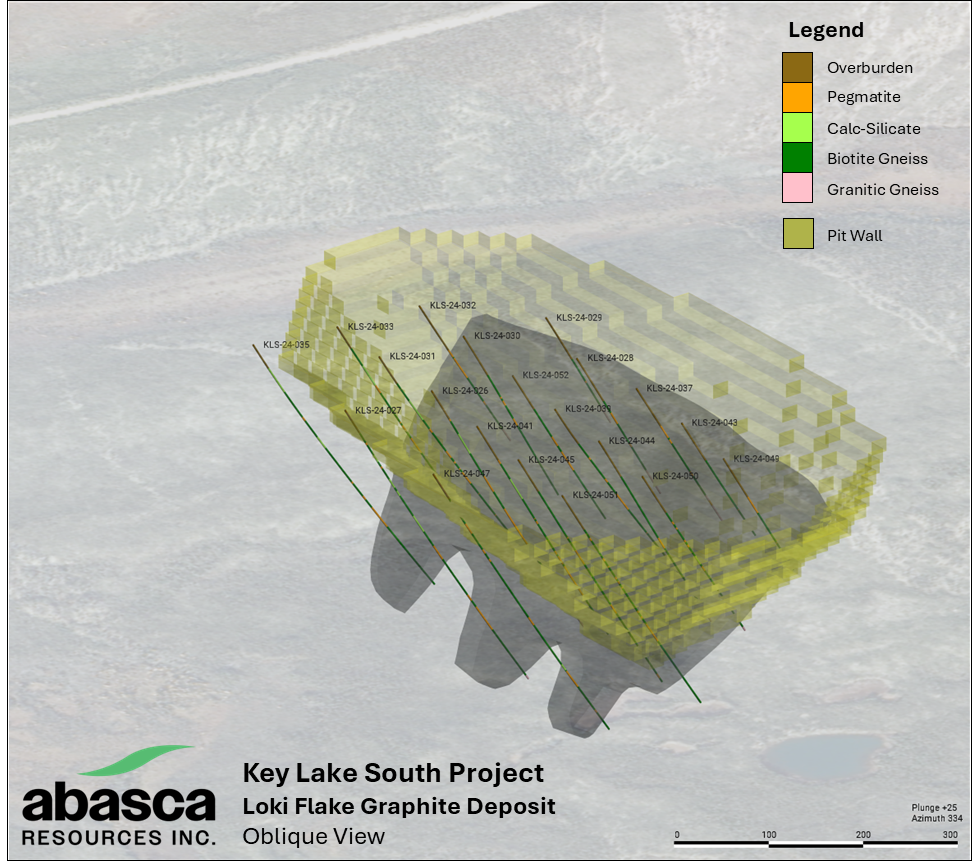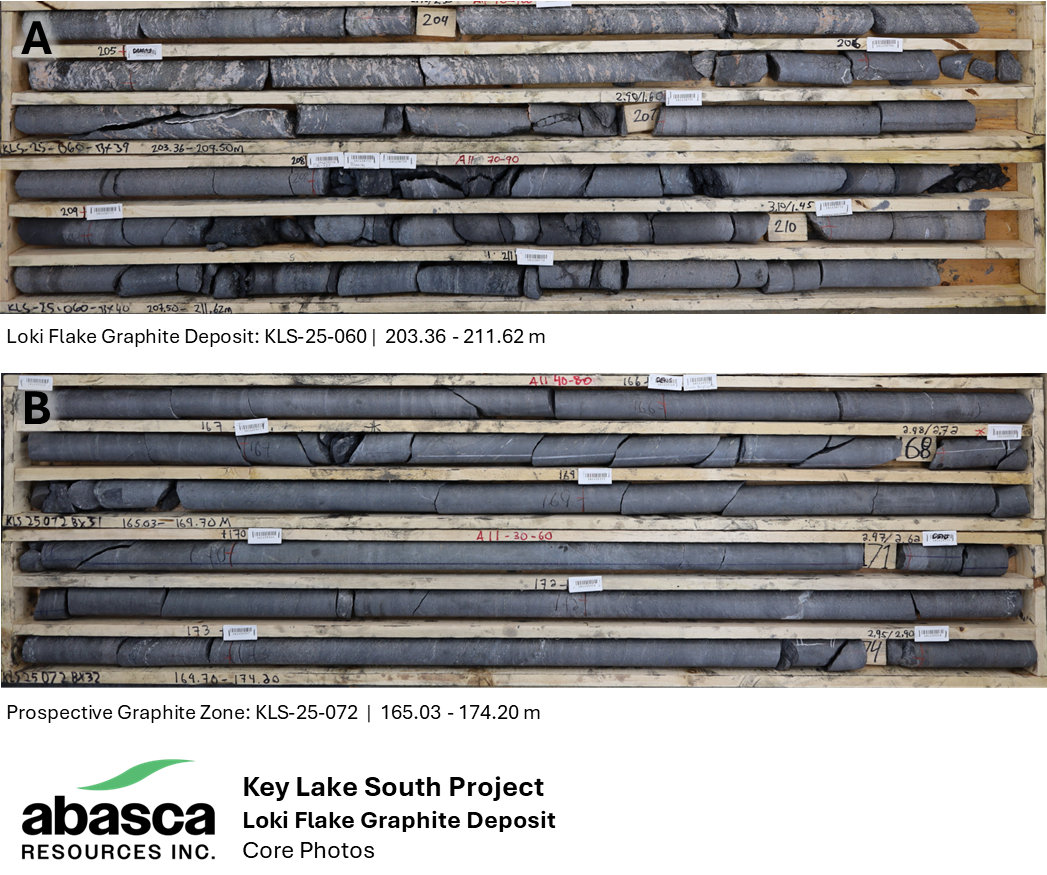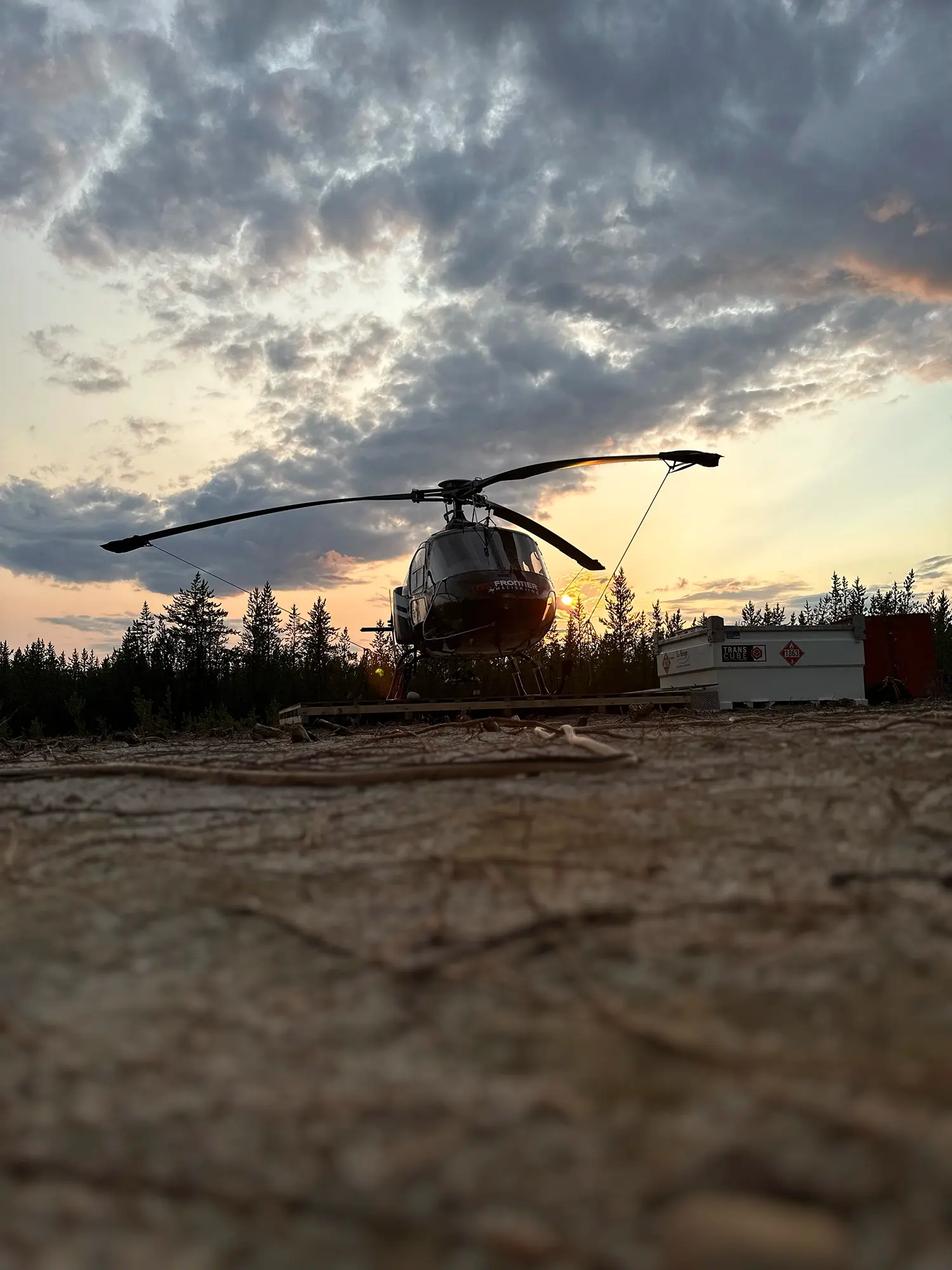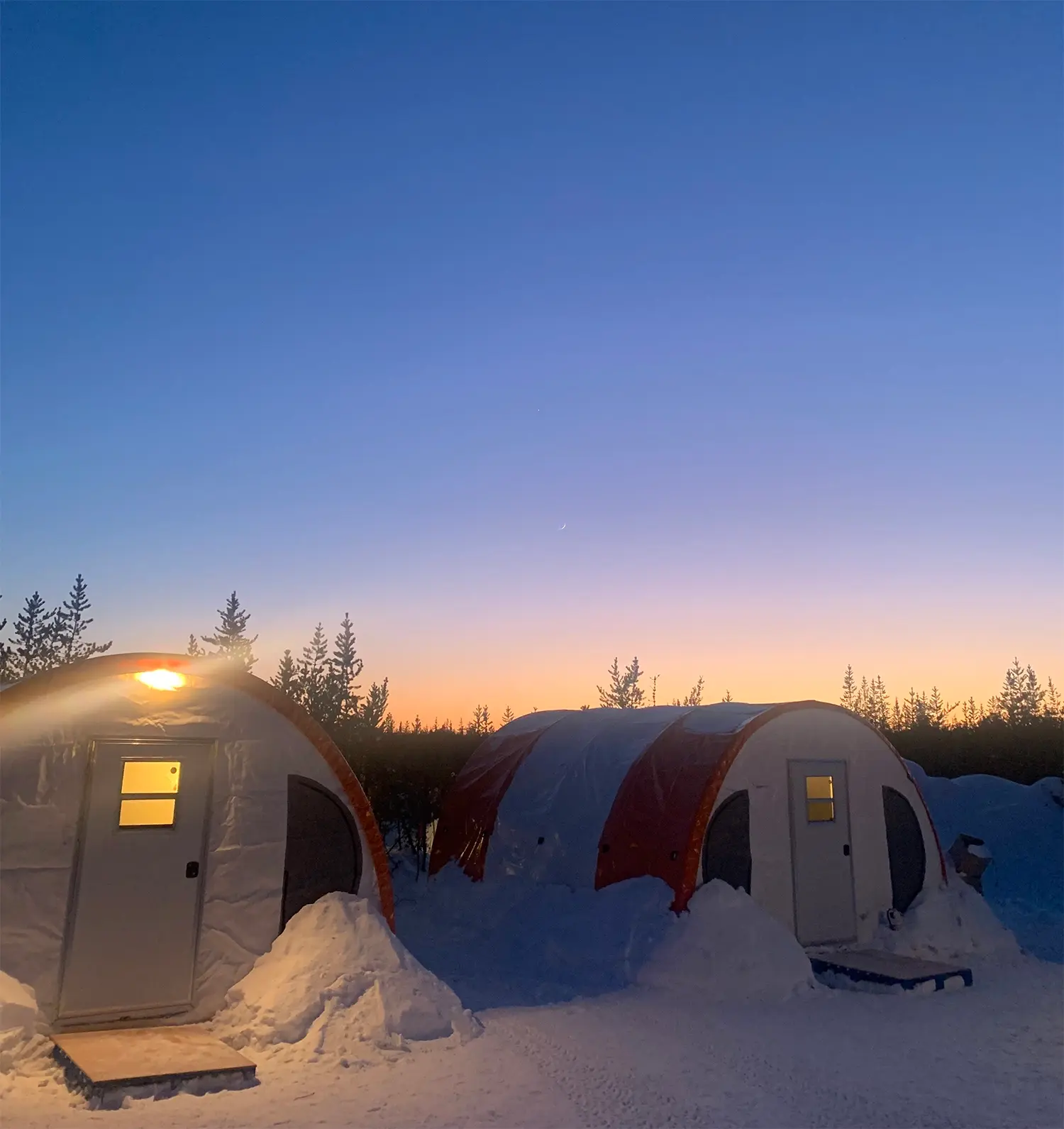projects
Key Lake South
project description
The Key Lake South Project (KLS) is located approximately 15 kilometres south of the Key Lake mill which processes ore from Cameco Corp.’s (TSX: CCO; NYSE: CCJ) McArthur River uranium mine. Provincial Highway 914, a north-south all-weather highway in Saskatchewan, crosses the project, providing ideal access. The project consists of 12 contiguous claims (23,977 hectares or approximately 240 sq. km) which were staked during 2011 to 2012 and have been held and explored by a private company (“SaskCo”) until the end of 2022. The project was then transferred to Abasca Resources Inc. by reverse takeover of a TSX Venture listed corporation and is 100%-owned.
KLS is underlain by the prospective uranium hosting rocks of the Wollaston-Mudjatik contacting zone (WMCZ) in the southeastern Athabasca Basin. The world’s largest high-grade uranium deposits are associated with the unconformity between the Athabasca Basin and the Wollaston-Mudjatik basement. Most of the uranium occurrences and deposits associated with the Athabasca Basin are located near the boundary between the Mudjatik and Wollaston domains as either unconformity-related or basement-hosted type. KLS is located in the southern strike extent of these deposits and in the same regional magnetic low structure that hosts them. Alteration at the KLS shows characteristics of both unconformity-type and basement-hosted deposits.
In addition to the uranium prospectivity, KLS also hosts the Loki Flake Graphite Deposit (“Loki Deposit”) in the northern part of the project area. The Loki Deposit was discovered by Abasca in 2016 while exploring for uranium at KLS and representative drill core samples were taken of the zone for the purpose of uranium exploration. The 2016 drilling intersected the zone over a 2 km trend with intersections up to 40 m in length. In the fall of 2023, the samples were re-analysed for graphite and assays returned values up to 22.2 Cg %. A subset of the samples was also selected to determine the graphite flake size distribution by QEMSCAN, which yielded a median passing percent up to 214 μm.
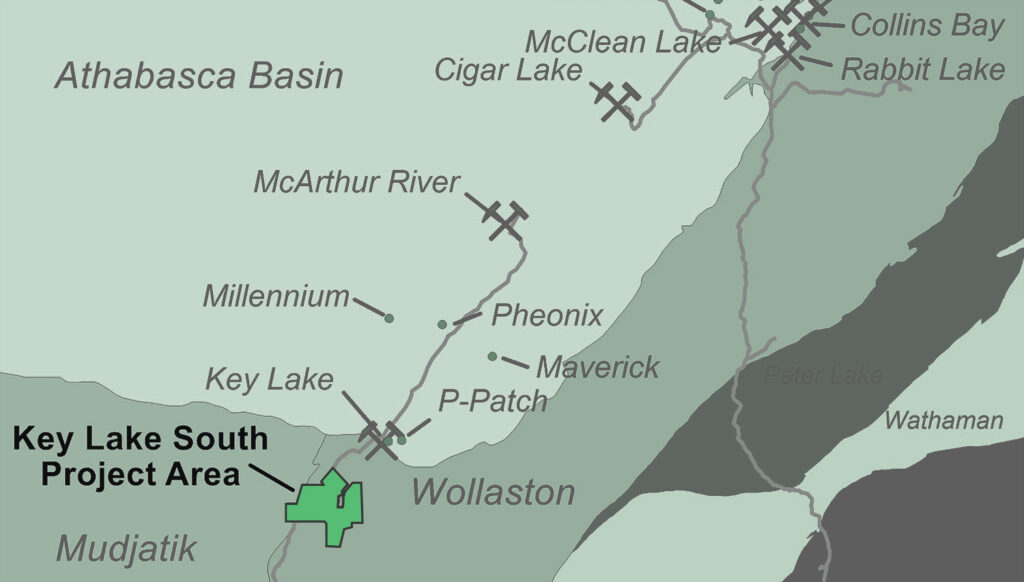
Highlights
23,977
Size in hectares
30,770
Total Meters Drilled
100%
Owned
recent exploration
A winter drill campaign was completed at the beginning of 2025. An additional 22 holes, totaling 5,925 m, was completed. Drilling was focused on continued extension of the Loki Deposit, drilling at a 100 m x 100 m spacing to the northwest and southeast of drilling done in 2024. One exploration hole (KLS-25-072) targeting a parallel conductor north of the Loki Deposit was completed and included multiple graphite intersections, up to 45 m in length. Graphite mineralization in this hole is visually similar to that in the Loki Deposit.
Assays from the 2025 winter drill program are pending.
loki flake graphite deposit
NI 43-101 Technical Report (PDF)
The Loki Deposit was discovered by Abasca in 2016 while exploring for uranium at KLS and representative drill core samples were taken of the zone for the purpose of uranium exploration. The 2016 drilling intersected the zone over a 2 km trend with intersections up to 40 m in length. In the fall of 2023, the samples were re-analysed for graphite and assays returned values up to 22.2 Cg %. A subset of the samples was also selected to determine the graphite flake size distribution by QEMSCAN, which yielded a median passing percent up to 214 μm.
In 2024, 20 holes totaling 5,499 m, were drilled into a 600 m section of the Loki Flake Graphite Deposit at 100 m drill spacing. These holes, as well as re-sampled holes from the 2016 drilling, contributed to the maiden graphite resource announced on April 15, 2025. The Mineral Resource Estimate (Table 1) includes:
- Total Inferred Resource: 11.31 Mt of Graphite at and average grade of 7.65 % Cg.
- Contained Graphite: 0.86 Mt
- Cut-off Grade: 2.78 % Cg
The Loki Deposit remains open at depth and along strike. Continued delineation was completed in the winter of 2025.
Table 1: Pit-constrained inferred mineral resource estimate of the Loki Flake Graphite Deposit.
| Category | Cut-off Grade (% Cg) | Tonnage (Mt) | Grade (% Cg) | Contained Graphite (Mt) |
| Inferred | 2.78 | 11.31 | 7.65 | 0.86 |
- The reporting standard for the Mineral Resource Estimate uses the terminology, definitions and guidelines given in the Canadian Institute of Mining, Metallurgy and Petroleum (CIM) Standards on Mineral Resources and Mineral Reserves (May 2014) as required by NI 43-101.
- Reported Mineral Resources are constrained to a pit-shell generated in Whittle software above a cut-off grade of 2.78 % Cg.
- The estimation of Mineral Resources was completed through a block model approach using interpreted geology wireframes, composites from drill core assays, and grade interpolation via Ordinary Kriging.
- Numbers may not add up due to rounding.
- The effective date of this Mineral Resource estimate is April 10, 2025.
- The qualified person knows of no environmental, permitting, legal, title, taxation, socio-economic, marketing, political or other relevant factors that may materially affect the Mineral Resource Estimate in this report.
- Mineral Resources are not Mineral Reserves and have not demonstrated economic viability.
The Loki Deposit is hosted in the metapelitic rocks of the Wollaston Domain along a northwest-trending fault zone with graphite mineralization extending from the overburden-basement contact down-dip toward the southwest. Calc-silicate and pegmatite rocks are intersected in the hanging wall, interlayered with the metapelitic rocks, which are all structurally overlying granitic gneiss.
Collected samples were sent to SRC Geoanalytical Laboratories in Saskatoon, Saskatchewan, an independent laboratory accredited under ISO/IEC 17025:2017, for preparation and ICP-MS multi-element analysis, boron by fusion as well as total graphite content (% Cg) and total sulphur by LECO. Samples were collected in accordance with industry-standard quality assurance / quality control practices and included the insertion of blanks, standard reference materials, and repeats into the sample stream at regular intervals. Samples were also collected for in-field and lab density measurements at regular intervals and through the mineralized zones.
project history
Considerable exploration activity by multiple operators has occurred on the KLS Project. Early regional exploration activities between the late 60s and throughout the 70s focused on ground prospecting, lake water geochemistry, and airborne radiometric and electromagnetic (EM) surveys as well as some shallow drilling. Although these early activities led to the discovery of the nearby Gaertner and Deilmann deposits that comprise Key Lake, no significant uranium mineralization was discovered over the current KLS Project area during that time. During the early 80s, anomalous radioactivity in pegmatites was discovered during ground prospecting surveys over the KLS Project area and shallow follow-up drilling was done during the mid-2000s with limited technical success.
SaskCo acquired ownership of the property through staking in 2011 and 2012. Various compilation reports and interpretations of historical data were undertaken by SaskCo, both in-house and by independent consultants, in 2011, 2012, and 2013, resulting in identifying target areas and recommendations for future exploration work. Field programs, including airborne and ground geophysical surveys, geological mapping, soil and lake sediment geochemical surveys, and radon-soil-surveys were conducted by SaskCo in 2014 and 2015.
In 2016, SaskCo carried out a diamond drilling program to test geological features interpreted by the previous exploration data, including the 2014 HeliFALCON Airborne Gravity Gradiometer survey, EM surveys, geochemistry surveys, and geological mapping. A total of 4,553 metres were drilled comprising 26 NQ holes in two target areas: 15 holes totalling 2,744 metres in the Campbell Creek area and 11 holes totalling 1,809 metres in the Mustang area where SaskCo discovered intersections of up to 256 ppm U over 0.4 m. In 2022, Condor Consulting Inc. was engaged in further interpreting and modelling available geophysical survey data to assist with SaskCo’s in-house technical team for structural analysis, target prioritizing, and detailed drillhole planning.
In 2023, Abasca completed an additional 25 holes totaling 10,135 m over winter and summer drill programs at KLS. Geochemical assays confirmed anomalous uranium intersections at the Mustang target area where 9 of the 11 drillholes intersected anomalous uranium over a cumulative total core length of 13.85 m. KLS-23-004 intersected a total of 1.5 m of anomalous uranium, including 10 cm at 1260 ppm U and KLS-23-006 intersected a total of 3.4 m of anomalous uranium, including 79 cm at 897 ppm U and 43 cm at 942 ppm U. KLS-23-009 intersected a total of 2.4 m of anomalous uranium, including 50 cm at 1010 ppm U.
Multiple holes in the 2023 drilling included intersections of stacked graphic fault zones with overprinting fracture zones, fault gouge, and local fault breccia – ideal features in other basement-hosted uranium deposits in the Athabasca Basin region. Silicification, hematite and clay alteration observed in drillholes within and proximal to fracture and fault zones. The identification of the alteration within reactivated fault zone systems and coincident anomalous pathfinder element geochemistry, including Boron, Cerium and Copper, is essential to the search for uranium deposits.
In 2024, 27 holes were drilled at KLS, totaling 9,092 m. Drilling was divided between regional exploration along the Seager Lake trend (“Seager Trend”) on the western side of the property and the Loki Flake Graphite Deposit. A total of 5 holes were drilled along the Seager Trend, totaling 2,681 m. Drilling intersected pervasive silicification zones and local graphitic fault zones.
2024 drilling at the Loki Deposit consisted of 20 holes totaling 5,499 m. The drilling was focused into a 600 m section of the Loki Flake Graphite Deposit at 100 m drill spacing. All holes intersected significant graphitic intervals similar to those drilled in 2016. An additional 2 holes, totaling 912 m, were drilled on a parallel conductor north of the Loki Deposit. These holes also intersected a new graphite zone up to 50 m wide (assays pending).
gallery
